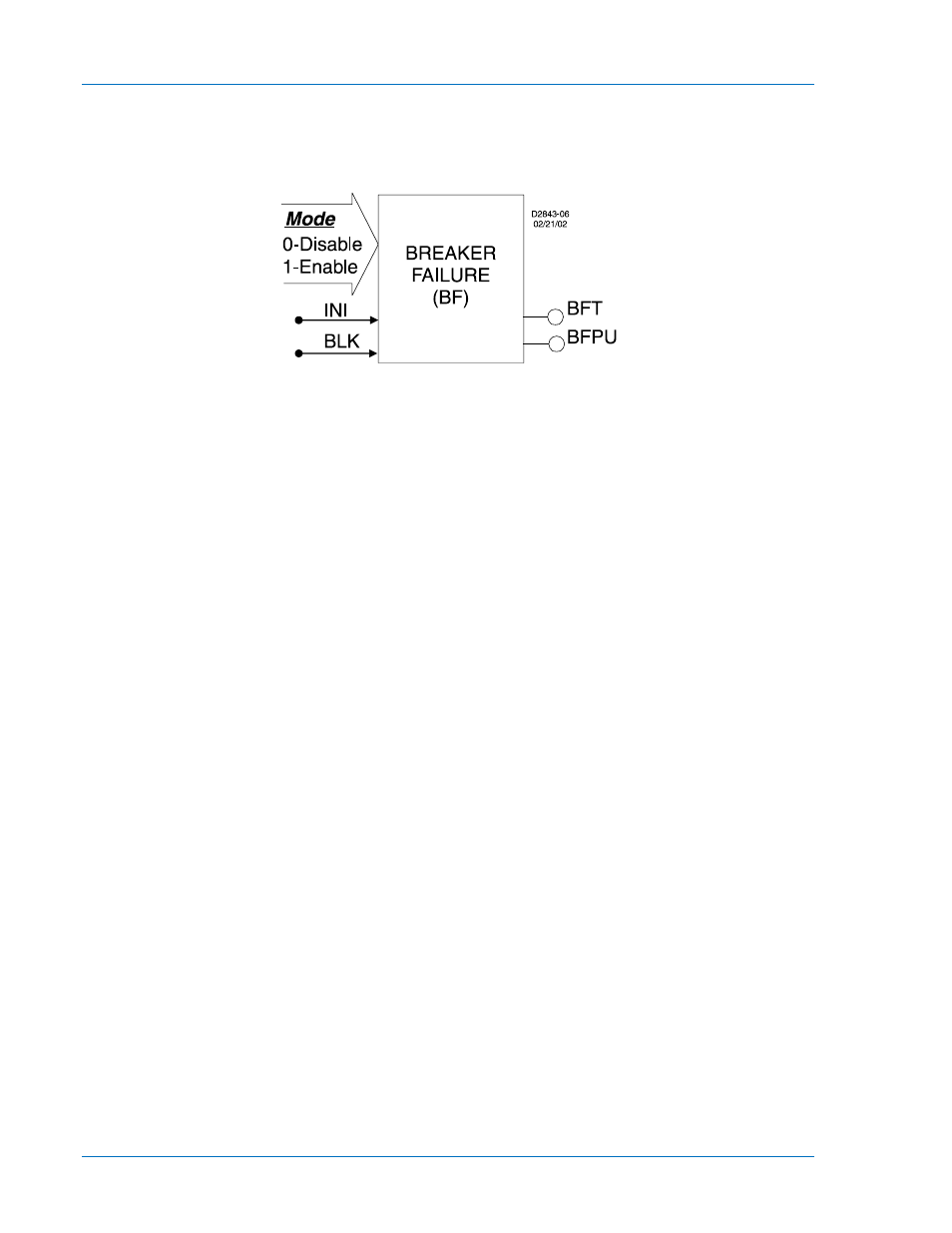Breaker failure protection, Bf - breaker failure protection, Breaker failure protection -20 – Basler Electric BE1-851 User Manual
Page 76: Bf - breaker failure protection -20, Figure 4-18. breaker failure logic block -20

Breaker Failure Protection
BF - Breaker Failure Protection
BE1-851 relays provide one function block for breaker failure protection. This function includes a timer
and a current detector. Figure 4-18 shows the BF function block. The function block has two outputs
BFPU (breaker failure pickup) and BFT (breaker failure trip).
Figure 4-18. Breaker Failure Logic Block
An INI (Initiate) logic input is provided to start the breaker failure timer. When this expression is TRUE and
current is flowing in the phase current input circuits, the breaker failure timer is started. Supervision of the
initiate signal can be designed in BESTlogic. Once the breaker failure timer is started, the initiate signal
does not have to remain TRUE.
A BLOCK logic input is provided to block operation of the breaker failure protection. When this expression
is true, the function is disabled. For example, this may be an input wired to a test switch such that breaker
failure protection is disabled when the primary protective elements are being tested to prevent inadvertent
backup tripping during testing.
The breaker failure timer is stopped by the fast-dropout current detector function. See Section 3, Input
and Output Functions, Current Measurement Functions, for more details on this function. The fast-dropout
current detector is designed to directly determine when the current in the poles of the breaker has been
interrupted without having to wait for the fault current samples to clear the one-cycle filter time used by
the normal current measurement function. This function has less than one cycle dropout time. The timer
can also be stopped by the block logic input being asserted.
The current detector sensitivity is fixed at 10% nominal. A traditional breaker failure relay includes a fault
detector function that serves two independent purposes: Current detector and fault detector. A current
detector is generally included to determine that the current has been successfully interrupted in all poles
of the breaker to stop breaker failure timing. The secondary function of a traditional fault detector is to
provide an independent confirmation that a fault exists on the system to increase security from
misoperation caused by an inadvertent initiate signal. To do this, a fault detector by definition must be set
above load current reducing its sensitivity as a current detector. Since this breaker failure timer is included
in a multifunction protection system, fault detector supervision is not required.
If you are using external relays to initiate the breaker failure timer, it may be desirable to include fault
detector supervision of the initiate signal using an instantaneous overcurrent function in BESTlogic. For
example, if it is desired that a fault detector supervise certain initiate signals, it is possible to AND them
with one of the 50T protective functions using a virtual output expression. In other applications, it may be
desirable to have breaker failure timing with no current detector supervision. In this case, one of the
general-purpose logic timers (device 62) can be used as a breaker failure timer.
When the breaker failure timer is picked up, the BFPU logic output is TRUE. This output would typically
be used as a re-trip signal to the protected breaker. This can provide an independent tripping signal to the
breaker that may also open the breaker to prevent backup tripping.
If the initiate logic expression remains TRUE for the duration of the breaker failure delay time and the
current detector is still picked up, the BFT output is asserted. This output would normally be used to trip
an 86F lockout relay that will trip and prevent closing of adjacent breakers and/or key transfer trip
transmitters. If the target is enabled for the function block, the target reporting function will record a target
when the protective function trip output is TRUE and the fault recording function trip logic expression is
TRUE. See Section 6, Reporting and Alarms, Fault Reporting, for more details on the target reporting
function.
4-20
BE1-851 Protection and Control
9289900990 Rev R